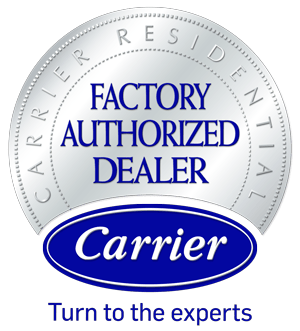Commercial Refrigeration Solutions for Your Business
Commercial refrigeration systems form the backbone of countless businesses across Birmingham, Mountain Brook, Vestavia, Hoover, Helena, and Homewood. From restaurants and grocery stores to medical facilities and distribution centers, these critical systems ensure product safety, maintain quality standards, and protect valuable inventory around the clock. At Stegall, we understand that when your refrigeration equipment fails, every minute counts. That’s why we offer commercial, industrial and residential HVAC, plumbing, and electrical support services 24 hours a day, 7 days a week, ensuring your refrigeration systems receive immediate attention whenever problems arise.
The complexity of modern commercial refrigeration extends far beyond simple temperature control. These sophisticated systems must maintain precise environmental conditions while operating efficiently under demanding circumstances. Whether you’re managing a small convenience store cooler or overseeing an entire warehouse of temperature-controlled storage, proper installation, maintenance, and repair of these systems directly impacts your bottom line through energy costs, product preservation, and regulatory compliance.
Understanding Commercial Refrigeration Systems and Components
Commercial refrigeration operates through a continuous cycle of heat removal using specialized refrigerants that absorb and release thermal energy. The process begins when liquid refrigerant enters the evaporator coils inside your cooler or freezer, where it absorbs heat from the surrounding air and transforms into a gas. This gaseous refrigerant then travels to the compressor, which increases its pressure and temperature before sending it to the condenser coils. Here, the hot gas releases its accumulated heat to the outside environment and returns to liquid form, ready to begin the cycle again.
The efficiency of this process depends on numerous interconnected components working in harmony. Compressors serve as the heart of the system, available in various configurations including reciprocating, scroll, and screw types, each offering different advantages for specific applications. Evaporator and condenser coils must maintain optimal surface area and cleanliness to facilitate effective heat transfer. Expansion valves regulate refrigerant flow rates to match cooling demands, while sophisticated control systems monitor temperatures, pressures, and operating parameters to maintain peak performance while preventing equipment damage.
Types of Commercial Refrigeration Equipment We Service
Walk-in coolers and freezers represent some of the most common commercial refrigeration applications, ranging from compact units suitable for small restaurants to massive warehouse-sized installations. These systems require careful attention to insulation integrity, door seal conditions, and proper air circulation patterns to maintain consistent temperatures throughout the storage space. Regular maintenance includes checking refrigerant levels, cleaning evaporator coils, inspecting fan motors, and verifying thermostat calibration to prevent temperature fluctuations that could compromise stored products.
Display cases and merchandising refrigerators present unique challenges due to their dual function of preserving products while showcasing them to customers. These units must balance accessibility with energy efficiency, often incorporating specialized features like anti-fog glass coatings, LED lighting systems, and variable-speed fans that adjust to door opening frequency. Reach-in refrigerators and freezers, commonly found in commercial kitchens, endure constant use and require robust construction along with reliable temperature recovery capabilities after frequent door openings.
Energy Efficiency and Cost Management Strategies
Energy consumption represents one of the largest operational expenses for businesses relying on commercial refrigeration. Modern high-efficiency equipment can reduce energy usage by thirty to fifty percent compared to systems manufactured just fifteen years ago. Variable-speed compressors adjust their output based on actual cooling demands rather than cycling on and off at full capacity, significantly reducing power consumption during periods of lower demand. Advanced insulation materials and improved door seal designs minimize thermal losses, while smart defrost controls prevent unnecessary defrost cycles that waste energy and temporarily raise storage temperatures.
- Regular maintenance schedules that include coil cleaning, refrigerant charge verification, and component lubrication can improve system efficiency by up to twenty-five percent
- Upgraded lighting systems using LED technology generate less heat inside refrigerated spaces, reducing the cooling load while providing better product visibility
- Smart monitoring systems track temperature patterns, door opening frequencies, and equipment performance metrics to identify optimization opportunities and predict maintenance needs
Preventive Maintenance and Emergency Response
Implementing comprehensive preventive maintenance programs dramatically reduces the likelihood of unexpected equipment failures that can result in product loss and business disruption. Our technicians perform detailed inspections that evaluate refrigerant pressures, electrical connections, motor conditions, and control system operations. We identify worn components before they fail, allowing for planned replacements during convenient scheduling windows rather than emergency situations. Documentation of all maintenance activities provides valuable historical data that helps predict future service needs and supports warranty compliance requirements.
When emergencies do occur, rapid response becomes essential to minimize product loss and restore normal operations. Our round-the-clock availability ensures that skilled technicians can diagnose problems quickly and implement effective solutions. We maintain extensive parts inventories for common refrigeration components, enabling immediate repairs for many issues without waiting for parts delivery. Temporary refrigeration solutions can be arranged for situations requiring extended repair times, protecting your inventory while permanent repairs are completed.
Regulatory Compliance and Safety Considerations
Commercial refrigeration systems must comply with numerous federal, state, and local regulations addressing food safety, environmental protection, and workplace safety. The Food and Drug Administration establishes temperature requirements for storing various food products, with violations potentially resulting in significant fines and business closure. Environmental Protection Agency regulations govern refrigerant handling, leak detection, and system disposal, requiring certified technicians and detailed record-keeping for all service activities.
Safety considerations extend beyond regulatory compliance to include protecting employees and customers from potential hazards. Proper ventilation prevents refrigerant accumulation in enclosed spaces, while electrical safety measures protect against shock hazards from high-voltage components. Regular inspections identify potential slip hazards from condensation, ensure adequate lighting for safe navigation, and verify that emergency shut-off systems function correctly. We stay current with evolving regulations and industry best practices, ensuring your refrigeration systems meet all applicable requirements while operating safely and efficiently throughout their service life.

